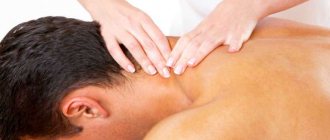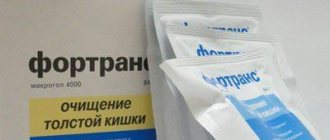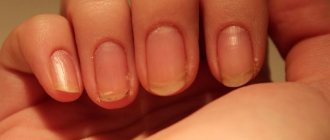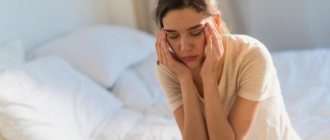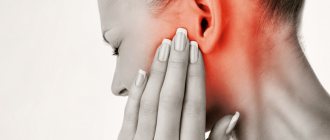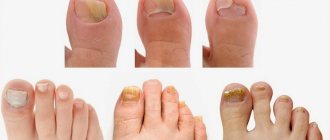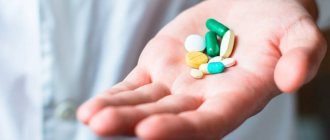Exercises after a stroke at home
If the patient’s condition allows, then the first exercises after a stroke begin while the patient is in the hospital. Typically, complexes and special programs are recommended by the treating neurologist in collaboration with a physiotherapist.
There are several types of exercises that can restore certain areas of the body:
- exercise therapy complex - begin in the hospital and continue at home;
- aerobic – to restore blood circulation and breathing;
- exercises that restore motor activity, restore motor skills of the limbs;
- complexes that restore balance;
- massage.
The patient is in the hospital for several days, then he is discharged home. But the rehabilitation process lasts about a year and does not always end successfully. Often this depends on the patient’s mood and his desire to return to his previous lifestyle.
Important! Any complex should be started only if it is recommended by a doctor. Exercising on your own after a stroke can be harmful to a person.
Never start exercise after a stroke or recommend it to a loved one unless recommended by a neurologist. Overexertion and stress can negatively affect the general condition and cause relapse.
Exercises while lying down
While the patient is not allowed to stand up, he can perform exercises after a stroke in a supine position, which are limited to the movements of the joints of the arms and legs. Then flexion, extension, and rotation are gradually introduced, and the range of movements increases. You need to start small, without trying to complete the “maximum” program: 15 movements in each joint 3-4 times a day will be more than enough.
The passive mode assumes that other people will do the exercises for the patient, bending and straightening his limbs. In the active mode, the patient performs the gymnastics himself using his healthy arm. Additional accessories include a towel that hangs over the bed, or a rubber ring.
When performing the complex, it is important to follow the sequence and develop the joints from the center to the periphery, for example, exercises for the arms are performed starting from the shoulder to the hand.
Recommended hand exercises:
- raising and lowering the arms along the body;
- flexion and extension of the limbs at the elbow joint;
- clenching and unclenching fingers;
- rotation with fists.
You need to do no more than 20 times in one approach.
Leg exercises:
- bending and straightening the legs at the knees;
- abducting the limbs to the side, using the hip joint;
- pulling your socks towards you and returning them to their original state (exercise “pedal”);
- movement of the toes (flexion, extension).
Number of repetitions – 20 times.
For the trunk muscles (if physically possible):
- without leaving the bed, perform body turns by rolling;
- raising the upper body, tensing the abdominal muscles;
- lifting the pelvis with the help of the shoulder blades, back of the head, feet, elbows.
The effectiveness of rehabilitation using exercise therapy
It is difficult to underestimate the importance of exercise therapy after a stroke. These are exercises that restore blood circulation in paralyzed parts of the body, restoring elasticity to muscle tissue.
It is necessary to begin exercises under the supervision of the attending physician and, if he recommends, continue them at home. There is no need to rely only on the help of medications.
Physical activity will help:
- restore motor activity faster;
- normalize blood circulation in the brain;
- relieve muscle spasms;
- prevent the occurrence of bedsores.
Excessive exercise should not be performed after a stroke. Excessive load will not give the desired result.
Indications for implementation
Exercises are prescribed after a stroke in the absence of motor activity, loss of sensitivity, and also in the following conditions:
- memory impairment;
- decreased hearing acuity;
- speech defects;
- increased tone or paralysis in the muscles;
- lack of motor activity in most of the body;
- swelling of the limbs;
- fast fatiguability;
- lack of coordination;
- changes in intellectual abilities.
The patient often cannot perform rehabilitation exercises after a stroke on his own. This is an additional burden for relatives and friends who want to help the patient.
In what cases are exercises contraindicated?
Loads cannot always help patients who have suffered such a disease.
Physical education after a stroke is contraindicated for people with certain indicators:
- people with mental disorders after a stroke cannot perform exercises;
- when convulsions or epilepsy attacks occur;
- tuberculosis of different stages;
- oncology;
- diabetes.
Only strict adherence to the doctor’s recommendations and adherence to the instructions gives a positive result.
Recommendations for exercise therapy after a stroke
Stroke is a serious disease that occurs when the blood circulation in the brain is impaired and leads to the death of most of the nerve cells. The consequence of the disease is the loss of some functions that the dead cells performed, as a result the patient develops problems with speech, complete or partial loss of hearing and vision, and paralysis.
Physical therapy after a stroke will help the body restore lost functions, so such a serious illness is not a death sentence at all.
Exercise therapy for stroke performs certain tasks and prevents the occurrence of:
Features of the exercises
At the beginning of rehabilitation, therapeutic exercises should be carried out under the supervision of a physical therapy doctor, who will explain all the intricacies of performing the exercises and select the appropriate complex in accordance with the type of stroke.
It is important not to overload the patient
Exercises must be performed regularly, gradually increasing the load. It is important not to overload the patient with excessive physical activity, as this can be harmful. It is recommended to start classes with the simplest movements, and be sure to warm up the body with a massage before starting.
Exercises must be performed regularly, gradually increasing the load. It is important not to overload the patient with excessive physical activity, as this can be harmful. It is recommended to start classes with the simplest movements, and be sure to warm up the body with a massage before starting.
Gymnastics options for different periods of stroke
The human body is unique and has the ability to regenerate, that is, to recover. Rehabilitation after a stroke at home will not help restore brain nerve cells, but exercises will help restore a person’s motor activity, restore speech, and eliminate other consequences.
The causes of disability after such a pathology are the absence or impairment of motor abilities. More often, one side, the cardiac side, suffers. But this does not mean that the exercises should only concern the left side. If the left side of the brain is affected, then paralysis occurs on the right side and vice versa.
Gymnastics is carried out with the same load on both sides, with the connection of a regular respiratory complex. These exercises may be limited to simply inflating balloons.
Contraindications to physical therapy after a stroke
Exercise therapy classes are not indicated for all stroke patients. There are a number of contraindications that you need to know in order to avoid undesirable consequences. This applies to patients:
- in a coma;
- having mental disorders, aggressive changes in behavior;
- with repeated stroke in old age;
- suffering from epileptiform seizures, convulsions;
- with severe concomitant diseases (diabetes, oncology, tuberculosis).
If headaches, increased blood pressure, or weakness occur during exercise, it is necessary to reduce the load. Relatives will need a lot of patience and endurance to help their loved one adapt to the surrounding reality and master the necessary everyday skills.
In order for the process to progress more intensively, they have to learn the basic movements and their sequence themselves. At the same time, for rehabilitation after a stroke, it is necessary to encourage the patient in every possible way, to stimulate his desire to recover, because friendly support, participation, attention and good emotions will give him energy and faith in his own strength.
Types of exercises
Exercise therapy exercises after a stroke do not differ in any characteristic features. They resemble morning exercises, but give effective results. Several exercises will be useful for patients and for those who want to prevent the disease or its relapse. An important point is the regularity of the exercise. If it is difficult to repeat the exercise, then in the acute or early period this may not be done.
Passive
This type of exercise must be done in a hospital setting.
Typically the complex includes:
- limb massage every 3 hours;
- extension/flexion of limbs – 2 times a day for 30-40 minutes;
- exercises to restore speech, articulation, memory;
- breathing exercises;
- The first exercise therapy exercises begin after the restoration of independent motor activity.
Everything is done first on the bed. Later, when a person can sit down and get up, they begin to do it in a sitting and standing position. Passive loads will help activate blood flow and restore sensitivity in the limbs
In the mental field
Mental exercises, which are included in the exercise therapy complex, involve the restoration of the following functions after a stroke:
- memory;
- speech;
- vision;
- hearing;
- concentration of attention;
- perception of what is happening;
- reasoning;
- coordination of movements.
These are restorative exercises that are aimed at brain function. They constantly talk to a person, force them to remember names, events from life, and concentrate attention on certain things.
In a sitting position
The complex can be carried out at a time when the patient, independently or with the help of someone, can take a sitting position.
- Make the patient move his eyes to the side, up, down. Perform with your eyes open, then ask them to close and repeat the movements. This exercise, which normalizes blood pressure, activates brain cells. Perform 5 times in the first days, gradually increase to 10.
- Turn your head 6 times in each direction.
- Raise your arms symmetrically and slowly lower them. If one arm is paralyzed, the patient performs the exercise with the other, and the assistant lifts the other.
- Give tennis balls and expanders into your hands and ask them to squeeze them with your hands. Exercise restores motor skills.
- Roll balls or rubber round toys with your feet.
The load is increased gradually so that the patient does not feel tired. After his movements become more confident, you can retract and spread your shoulder blades, slowly raise and lower your legs.
Standing
When the patient has managed to get to his feet, the complex may become more extensive.
Important! All exercises after an ischemic stroke are carried out under the supervision of doctors or relatives. The patient should not feel discomfort, pain, or fatigue.
If any discomfort occurs, it is necessary to reduce the intensity or perform the exercises in a sitting position.
- The patient stands with his arms down and pressed to the body. Inhale – join your arms in a circle above your head, exhale – slowly lower them down (5-6 times).
- Slowly turn the body in different directions. Inhale - turn, exhale - return to i. p. (4-6 times).
- Squat without lifting your heels. Slowly lower yourself while inhaling, then exhale, and slowly rise up on the second inhalation (6-8 times). If dizziness occurs, temporarily eliminate the exercise.
- Bend to the sides while raising the opposite arm. Exhale - bend, inhale - return to i. p. (6-8 times).
- Starting position – standing, feet shoulder-width apart, hands clasped behind your back. Inhale – rise on your toes, turn your arms without separating them. Exhale - return to standing position. (6-8 times).
This is a simple complex that normalizes blood circulation and restores elasticity in the joints. It is carried out twice a day. Walking between classes is advisable.
Entry level exercises
To restore coordination, we do special gymnastics. We selected exercises to practice exactly those movements with coordination problems. As we recover, we make the gymnastics more difficult. Therefore, several gymnastics came out. Here's the gymnastics we started with. We started doing some of the exercises in bed.
Nose touching
- I do it while sitting in bed.
- I stretch both arms out in front of me.
- I close my eyes.
- I alternately touch the tip of my nose with the fingers of my right and left hands.
- 10 reps.
Right hand chess
- I do it while sitting in bed.
- I place the pieces on the chessboard with my right hand.
- 5 reps.
Left hand chess
- I do it while sitting in bed.
- I place the pieces on the chessboard with my left hand.
- 10 reps.
Right hand square
- I do it while sitting in bed.
- I “draw” a square with my right hand. In front of you, at arm's length. At the level of the face.
- 10 reps.
Left hand square
- I do it while sitting in bed.
- I “draw” a square with my left hand. In front of you, at arm's length. At the level of the face.
- 10 reps.
Right hand circle
- I do it while sitting in bed.
- I “draw” a circle with my right hand. In front of you, at arm's length. At the level of the face.
- 10 reps.
Left hand circle
- I do it while sitting in bed.
- I “draw” a circle with my left hand. In front of you, at arm's length. At the level of the face.
- 10 reps.
Two squares
- I do it while sitting in bed.
- I “draw” two squares with both hands at the same time and synchronously. In front of you, at arm's length. At the level of the face.
- 10 reps.
Two circles
- I do it while sitting in bed.
- I “draw” two circles with both hands at the same time and synchronously.
- 10 reps.
- In front of you, at arm's length. At the level of the face.
Circle with left foot
- I perform while sitting on the edge of the bed.
- With the toe of my left foot I “draw” a square on the floor.
- 10 reps.
Right foot circle
- I perform while sitting on the edge of the bed.
- With the toe of my right foot I “draw” a circle on the floor.
- 10 reps.
Square feet
- I perform while sitting on the edge of the bed.
- I “draw” a square on the floor with both feet and toes synchronously.
- 10 reps.
Circle your feet
- I perform while sitting on the edge of the bed.
- I “draw” a circle on the floor with both feet and toes synchronously.
- 10 reps.
Special sets of exercises
Experts recommend using simple exercises to help the patient get through a difficult period. The video will help you get acquainted with them.
When performing any exercises, it is necessary to monitor the person’s condition and stop performing them if the following conditions appear:
- dizziness;
- headache;
- pressure change;
- weakness, fatigue;
- irritability;
- "goosebumps" in the eyes.
These are warning signs that can trigger a relapse. In the absence of such factors, it is recommended to use special simulators. There are special exercises designed for individual parts of the body.
For the torso
It is important to quickly restore all functions after an attack. Simple exercises for recovery after a stroke will help you quickly return to a normal lifestyle.
- Lying on the bed, bend your back. Repeat 5-6 times.
- From a lying position, slowly rise while inhaling to a sitting position. Lie down carefully as you exhale. Repeat 5-6 times.
- Lying down, fix your legs in one position and turn your body in different directions. Inhale - turn, exhale - and. n. Repeat 5 times in different directions.
If unpleasant symptoms appear, stop exercising.
For legs
A simple complex that is performed in a lying position. This exercise after a stroke is performed twice a day:
- legs straight, point toes towards the body, fix a little and return to i. P.;
- bend your leg at the knee and move it to the knee of the other leg, repeat with different legs 5 times;
- lie on your stomach, alternately pull your leg towards your body, bending the knee (5 times).
Leg exercises are simple, but require regular exercise.
For hands
The limbs are the first to be affected. Hand exercises after a stroke will help quickly restore sensitivity, motor skills and mobility. They begin in the hospital and continue at home.
- Hands in the lock. Raise it above your head as you inhale, lower it as you exhale. It is performed lying, sitting and standing, as the patient’s condition allows.
- With the palm of your hand, while inhaling, reach the opposite ear. As you exhale, return to the starting position and repeat with the other hand.
- Place both hands on your shoulders, crossing them on your chest.
For brush
All exercises for the hand are performed with the help of a healthy hand, with the participation of strangers, or independently in the later stages of rehabilitation.
Such simple therapeutic exercises for stroke will help quickly restore mobility and restore hand motor skills:
- clench and unclench your hands;
- spread and close fingers;
- insert into the palm and retract the thumb;
- rearrange, sort through small objects;
- collect puzzles;
- bend paper sheets with your fingers.
For eyes
Gymnastics for the face and eyes after a stroke are performed in any position convenient for the patient. It is enough to make rotational movements with your eyeballs with your eyes open and then with your eyes closed. Focus attention on the finger, which is brought closer to the tip of the nose and away from it. This is not only beneficial for the face and eyes, but also helps restore visual acuity.
To restore articulation
Articulation suffers in all patients. This is clearly visible on the face.
For rehabilitation after a stroke, simple exercises are performed:
- smile, hold the smile for 10 seconds;
- stick out your tongue and try to roll it into a tube;
- make rotational movements with your tongue sticking out;
- recite the alphabet;
- pronounce familiar words;
- use tongue twisters;
- try to click your tongue;
- alternate lip biting.
Each exercise is performed in an increasing pattern, starting from 4-5 times.
To improve coordination
After a stroke, coordination of movements is impaired. You can restore it by doing the following exercises:
- draw geometric shapes with your big toe on the floor while sitting on the bed;
- repeat the exercise with one, then the other leg, standing;
- walk along an imaginary line.
Yoga will help a little later. Some exercises involve restoring coordination of movements.
To restore memory
It will not be possible to quickly restore the memory of the injured person. Relatives and friends need to include exercises from the exercise therapy complex after a stroke. Ask the patient to name today's date or birthday. Ask for the residential address, names of relatives and friends. Constantly ask questions the answers to which he knew well before his illness.
Such exercises can be carried out during breaks, after therapeutic exercises have been carried out.
Exercises in a sitting position
If the patient already has the physical ability to sit independently, you can proceed to the next stage - gymnastics in a sitting position. It is aimed at improving the functioning of the limbs, strengthening the back muscles and preparing for walking. Let's look at recovery exercises:
- Sit on the bed, lower your feet to the floor. Hold onto the bed with your hands. Bend your back, pushing your chest forward. In this case, the deflection should be while inhaling, you need to relax while exhaling;
- In a sitting position, place your legs on the bed. Lift each limb up in turn. The legs should be straight;
- Lean your back on the pillow, stretch your legs forward, arms up. Bend your leg at the knee, clasp it with your hands. In this case, you must try to touch the knee joint with your chest. Hold for a couple of seconds, tilt your head forward, and exhale. Then raise your head and slowly return to the starting position. Do the same manipulation with the second leg;
- Lean back on the pillow, taking a comfortable position. Grasp the edges of the bed with your hands. Throw your head back, trying to bring your shoulder blades together. Remain in this position for a few seconds, return to the starting position;
- Sit on the bed with your legs dangling. Turn your head in different directions, then make circular movements. Manipulations should be slow;
- It is also useful to simply sit on the bed with your legs down. But the main condition is to not hold on. This exercise helps restore coordination and prepare for walking.
Important! At this stage, fine motor skills should be developed by sorting small objects.
We invite you to watch a video on how to exercise in a sitting position:
Types of simulators
Therapeutic gymnastics after a stroke involves the use of exercise equipment. It is not always possible to purchase them. The equipment is available in rehabilitation centers and sanatoriums.
The simulators are intended for a general recovery course, as well as for individual purposes:
- restoration of the musculoskeletal system;
- for fine motor skills;
- kinesitherapy;
- verticalization;
- restoration of walking;
- vibration therapy;
- lifts.
There are multifunctional exercise machines designed to restore many functions at the same time.
To train fine motor skills of the hand you can use:
- Rubik's Cube;
- expander;
- spiked balls for rolling in the palms;
- plasticine.
To quickly restore motor activity and improve the patient’s mental state, the following simulators are used:
- shanong – restores mobility of the lower extremities;
- Motomed Viva 2 – for loads on the lower and upper limbs;
- Alter Step rehabilitation simulator – restores muscle tone, restores mobility to the joints of the upper and lower extremities, and provides cardio exercise;
- “Anika” glove – improves fine motor skills;
- Equos – restores lost mobility to the limbs, making it easier for a person to maintain the body in a stable position.
Breathing exercises
Breathing exercises after a stroke are done while performing all physical therapy exercises. Controlling inhalation and exhalation is important for bedridden patients and for those who move independently. This ensures a full flow of oxygen to the affected brain and normalizes blood circulation.
This complex usually includes:
- inflating balloons;
- reading small tongue twisters while holding the air;
- take a deep breath through your mouth, hold for a second and exhale through your nose;
- repeat the previous exercise, increasing the time of holding your breath to 10 seconds;
- take a deep breath through the mouth and exhale while pronouncing the letter “s”;
- Repeat the previous exercise, pronouncing other letters.

